Image Archive

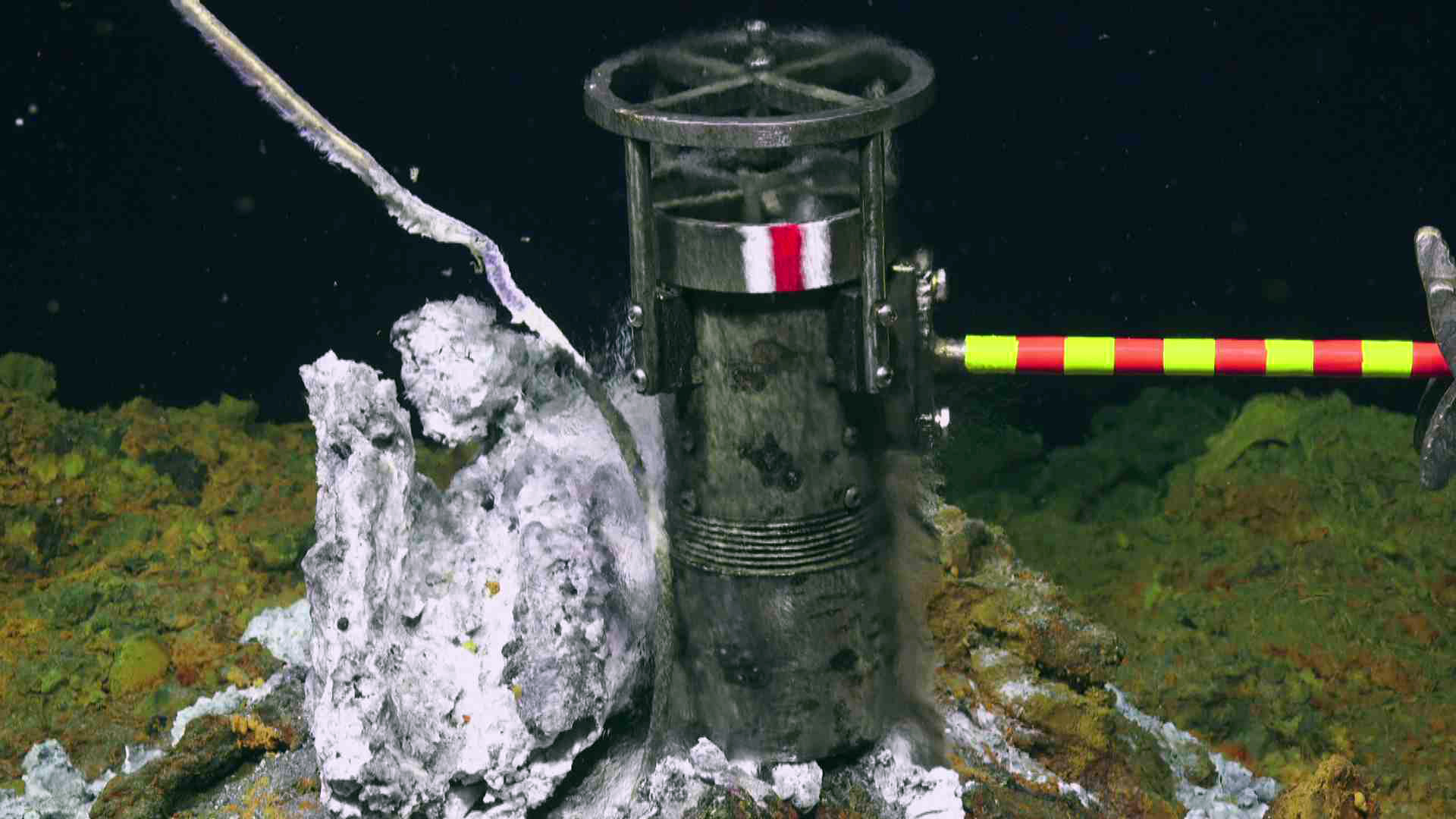
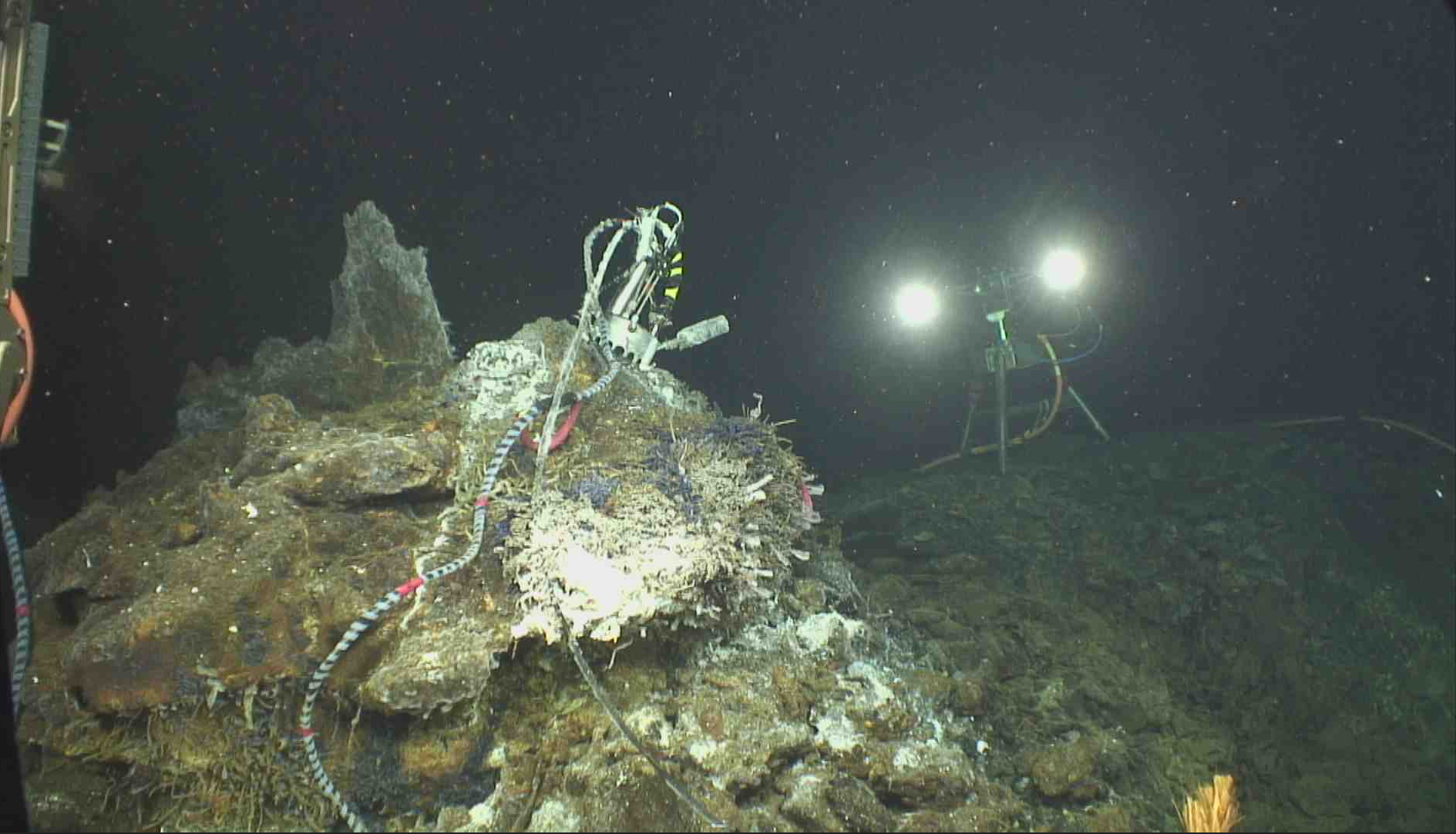




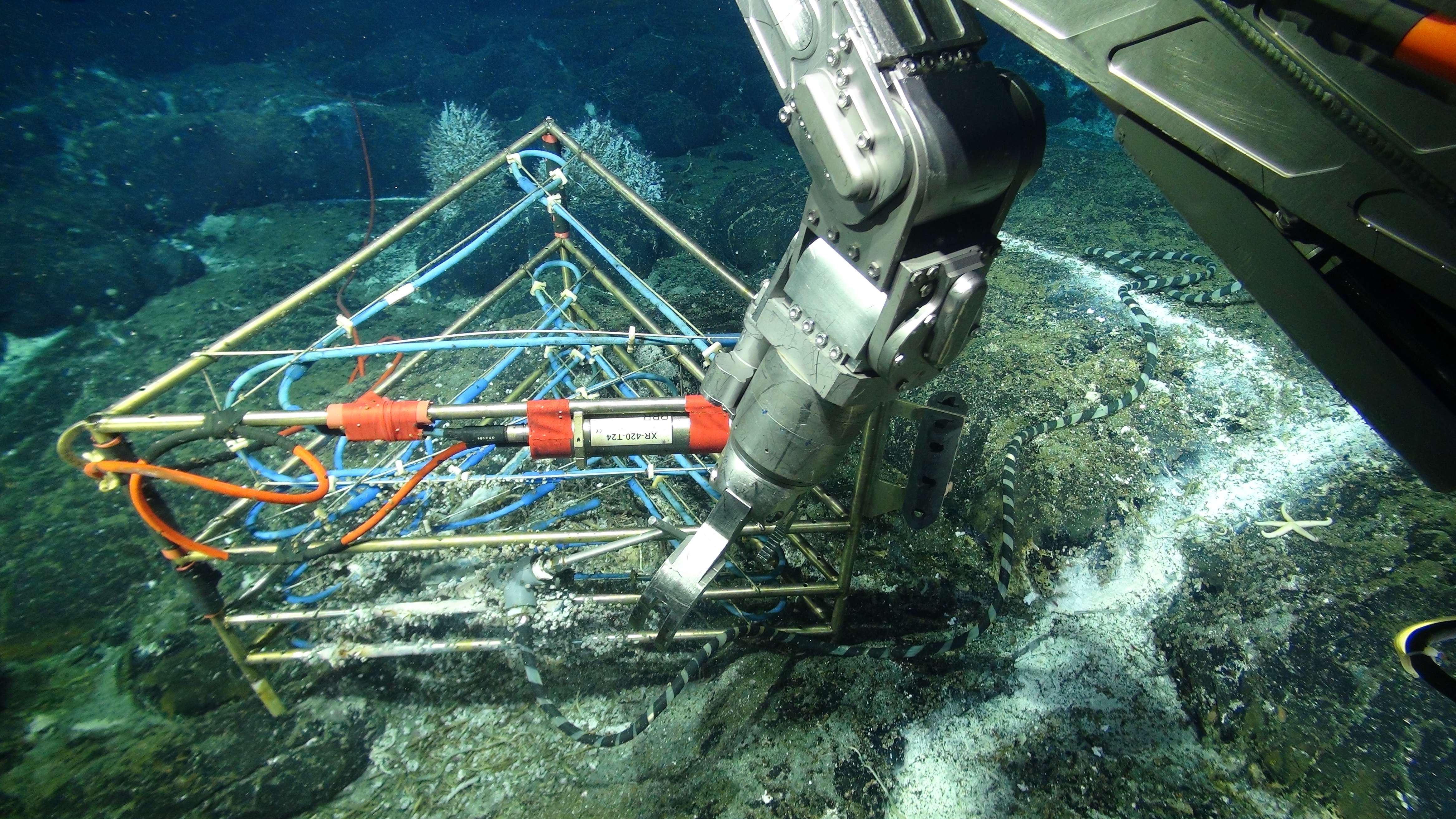







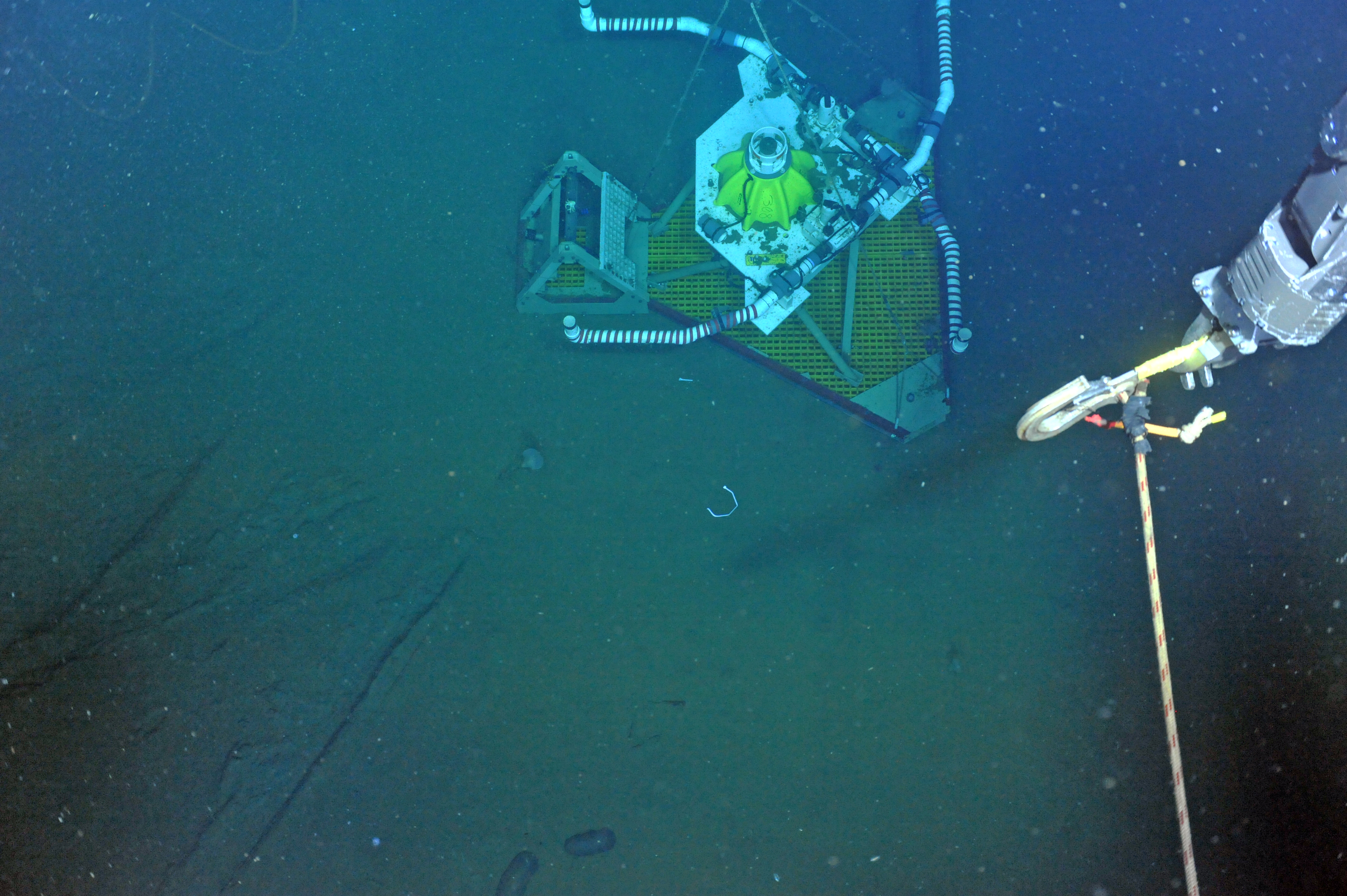










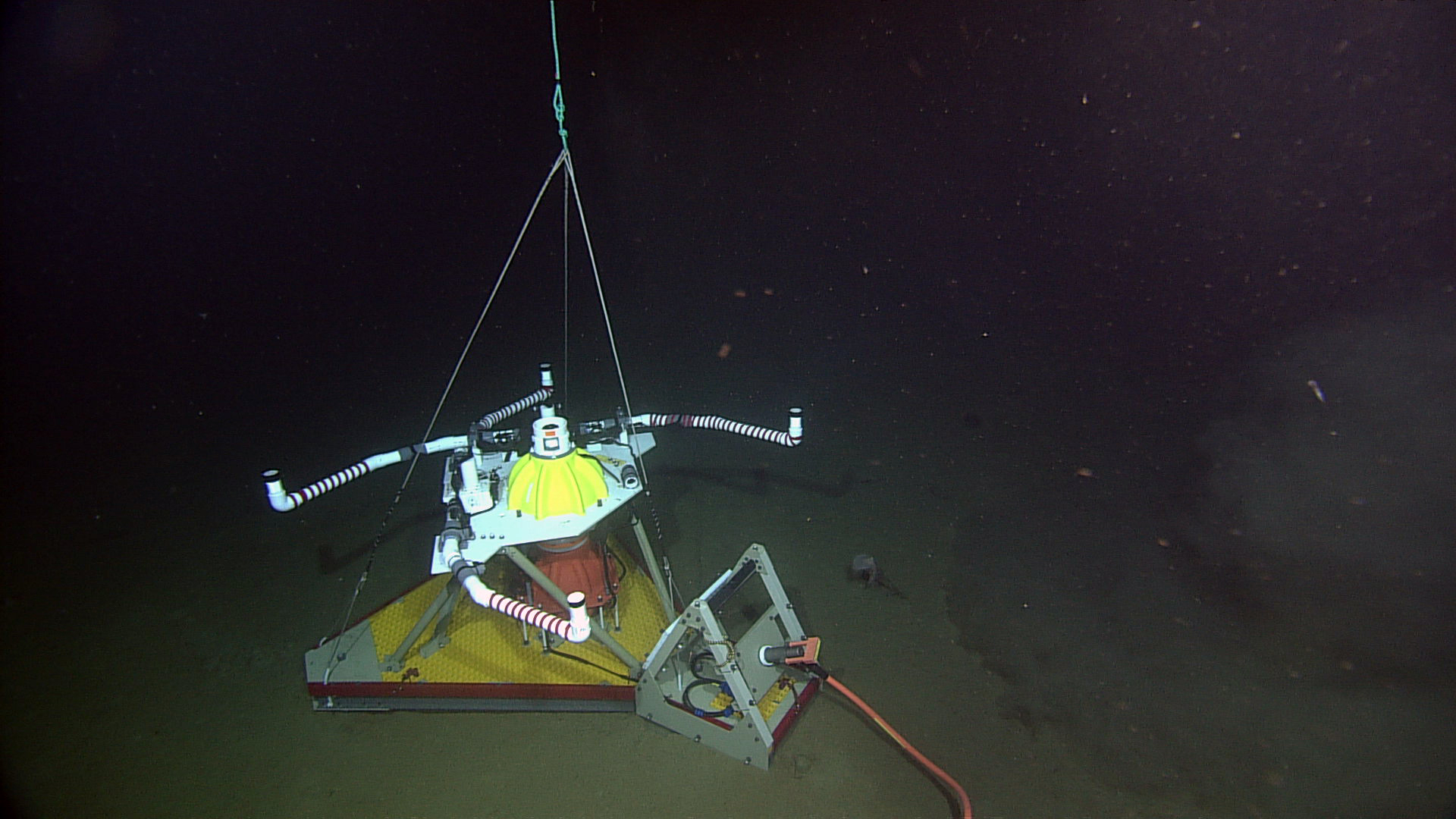
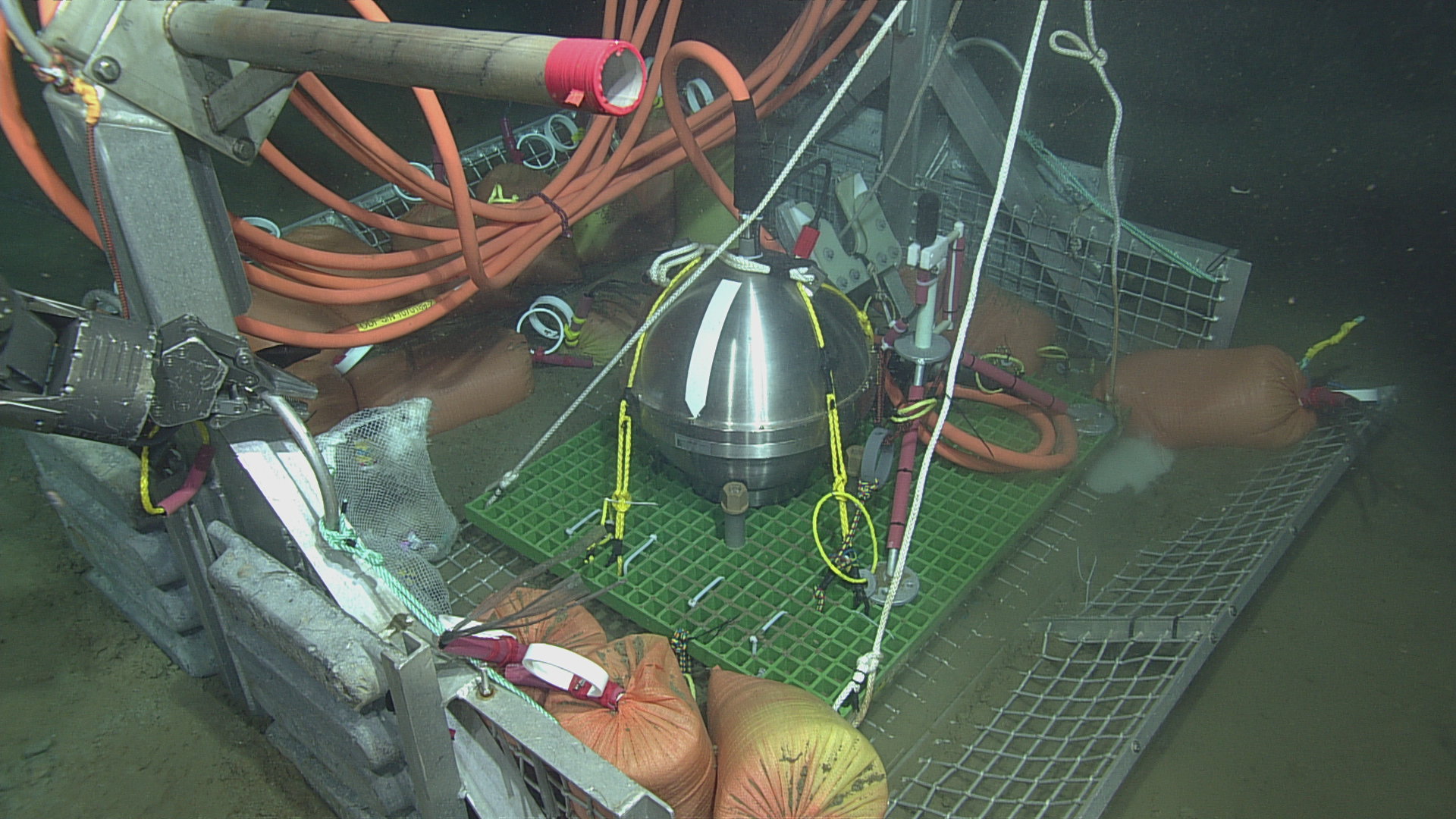

Surveying the HPIES deployment location at Axial Base during VISIONS'19. Photo credit: UW/NSF-OOI/WHOI; V19

A flow meter for hydrothermal vents is deployed at the small Diva chimney, held in the arm of Jason. Here, fluids are issuing the anhydrite-rich structure at ~ 290°C. The flow meter was designed by Leonid Germanovich, Clemson University. Credit: UW/NSF-OOI/WHOI, V18.

The Cabled Array digital still camera in the International District Hydrothermal Field photographs Jason during dive J2-980. Credit:UW/OOI-NSF/WHOI, V17

LED lights on the high definition camera, built by the Applied Physics Laboratory at the University of Washington, light up a ~1 m tall, young black smoker chimney at the base of the actively venting Mushroom edifice on Axial Seamount (water depth ~1500 m). The image, taken with the ROV Jason, shows the camera being tested by UW engineers during VISIONS16. They were in the Operations Center, located 300 miles to the east at the School of Oceanography. Here, they were commanding/controlling the camera live through the terrestrial and submarine Internet as part of the NSF Cabled Array infrastructure. Credit: UW/NSF-OOI/WHOI; V16.

A new osmotic fluid sampler is about to be installed in a diffuse flow site hosting a 3D temperature array in the ASHES Hydrothermal Field on the summit of Axial Seamount. Each year, as part of the annual operations and maintenance cruise, a sampler is recovered and a new one installed. Onshore analyses of the entrapped fluids provide insights on the evolution of fluid chemistry in time, in response to changing environmental conditions e.g. earthquakes, temperature, microbial utilization of gases and different elements. Credit: UW/NSF-OOI/WHOI; V16.

The ROV Jason 'looks' at a hybrid underwater wet-mate connector that connects the high definition camera to a ~ 4 km long extension cabled attached to Primary Node PN3B at the summit of Axial Seamount. This connection provides a 10 Gbs communication path to the terrestrial Internet located ~300 miles to the east. White bacterial mats line fractures in the lava-covered seafloor where diffusely flowing fluids are exiting the seafloor. Credit: UW/NSF-OOI/WHOI; V16.

The high definition camera, built by the UW Applied Physics Lab, was reinstalled in 2016 during the VISIONS'16 cruise. The prior camera had been streaming video live to shore for two years. The camera was recovered to clear the outer window of biofouling. The camera is located at the hydrothermal chimney called Mushroom in the ASHES hydrothermal field on Axial Seamount. Video are streamed live from ~5000 ft down and >300 miles offshore onto the Internet 8 times a day. Credit: UW/NSF-OOI/WHOI; V16.

A 3D temperature (thermistor) array housing 24 sensors rests above a small diffuse flow site a few meters away from the actively venting black smoker edifice called Mushroom in the ASHES hydrothermal field on Axial Seamount. This cabled instrument was designed and built by G. Proskurowski, UW School of Oceanography. Limpets have colonized the frame and cable housing the thermistors. An osmotic fluid sampler is inserted into the diffuse flow site to obtain chemistry coregistered with temperature. Credit: UW/NSF-OOI/WHOI; V16.

The cabled digital still camera streams images of Jason (Dive J2-932) live back to shore in real time as the vehicle works at the active hydrothermal vent called 'El Gordo' in the International District Hydrothermal Field - depth is 1500 m, and >300 miles offshore. The hydrothermal fluid sampler, called the RAS, is shown to the left, which allows fluid samples and temperature to be taken for a year. The instrument can be run in "mission mode" where samples are preprogrammed, or in "sponse mode" where missions are interrupted by operators to take samples - such as was done during the eruption of Axial Seamount in 2015. Credit: UW/OOI-NSF/WHOI, V16.

An HPIES instrument deployed off the starboard side of the R/V Sikuliaq ~ 125 km offshore Newport Oregon near the base of the Subduction Zone at Slope Base. The instrument was released and free fell 2900 m to land softly on the seafloor - the extended legs insure a softer landing and that is stays nearly horizonatal as it travels through the water column. This instrument utilizes a bottom pressure sensor, an inverted echosounder and a horizontal electrometer to provide insights into the vertical structure of current fields, near-bottom water currents, and water properties including temperature, salinity, and specific volume anomalies. It was built at the Applied Physics Laboratory. Credit: M. Elend, University of Washington, V16.

An HPIES instrument is being installed off the starboard side of the R/V Sikuliaq ~ 125 km offshore Newport Oregon near the base of the Subduction Zone. This instrument utilizes a bottom pressure sensor, an inverted echosounder and a horizontal electrometer to provide insights into the vertical structure of current fields, near-bottom water currents, and water properties including temperature, salinity, and specific volume anomalies. It was built at the Applied Physics Laboratory. Credit: M. Elend, University of Washington, V16.

Hagfish investigate flow meters called Mosquitos at methane seeps at Southern Hydrate Ridge (water depth ~800 m). Data from these instruments allow calculation of the flux of fluids into and out of sediments at this gas hydrate site marked by thick bacterial mats and abundant clams. Credit: UW/NSF-OOI/WHOI; V16.

A Hydrothermal Vent Cap at the top of the actively venting chimney called ‘El Gordo’, traps high temperature hydrothermal fluid. An intake nozzle from the mass spectrometer allows measurement of gas chemistry in real-time, sending data at the speed of light back to shore. Another nozzle sucks in vent fluids for sampling and for filtering of microbial DNA: the samples fluids and DNA are recovered during annual Cabled Array maintenance cruises for follow-on shore-based analyses. Credit: UW/NSF-OOI/WHOI; Dive J2-912, V16.

Close up of the Remote Access Fluid Sampler (RAS) built by D. Butterfield at NOAA-PMEL-UW. A nozzle is installed in an active venting site on the El Gordo chimney. Controlled from shore, or by a mission plan, a pump sucks in hydrothermal fluid into sterile bags (and also onto filters for collection of DNA in a similar system above the RAS). During annual Cabled Array maintenance cruises, this coupled mooring is recovered and collected material analyzed, with results provide at oceanobservatories.org. Credit: UW/NSF-OOI/WHOI; Dive J2-212, V16.

A temperature-resistivity sensor, with its wand now embedded in a sulfate-rich chimney (white, right) sends real-time data to shore from the Escargot chimney, 5000 ft beneath the oceans' surface and >300 miles offshore. Resistivity is an analogue for fluid chlorinity. Numerous hydrothermal vents in the International District Hydrothermal Field at the summit of Axial Seamount are boiling. Credit. UW/OOI-NSF/WHOI; Dive J2-912, V16.

The HPIES instrument at 2900 m water depth as it is about to be recovered by the ROV ROPOS during Leg 2 of the VISIONS'15 expedition. Credit: NSF-OOI/UW/ISS; V15.

UW undergraduate students Jesse, Lauren, and Kearstin help move a "mosquito" off of ROPOS's tool sled during Leg 1. This instrument has been measuring the flow of fluids into and out of a methane seep site at Southern Hydrate Ridge since it was installed last year. Credit: Mitch Elend, University of Washington.

A digital still camera, mass spectrometer, and fluid and microbial DNA sampler installed at the El Gordo hydrothermal chimney, International District Hydrothermal Field, Axial Seamount. A small, 1-day old chimlet sprouts from the 280°C, gas-rich vent called Dive in the International District Hydrothermal Field. NSF-OOI/UW/ISS; Dive R1839; V15.

An Osmotic fluid sampler is installed in a small diffuse flow site hosting abundant tubeworms, limpets, and palm worms in the ASHES hydrothermal fluid. When recovered next year, the fluids this sampler host will provide information on how vent fluid chemistry changes over time. The nozzle iis installed inside a triangular 3D thermistor array is Credit: UW/NSF-OOI/CSSF; ROPOS Dive R1835; V15.

The hydrophone (an underwater microphone) connected to the Benthic Experiment Package (BEP) at the Oregon Shelf site, in 80 meters of water. Photo Credit: NSF/UW/CSSF, Dive R1801, V14

The cabled coastal surface-piercing profiler (cCSPP) was delivered to the seafloor by ROPOS and placed roughly 12 meters due East of the medium-powered junction box MJ01C at the Oregon Shelf site, in 79 meters of water. The cylindrical sensor pod of the cCSPP (left side of image) will float freely in the water column after being released from the deployment cradle on the profiler base. Once powered up, the sensor pod will move up and down in the water column at least 4 times per day, taking samples continuously using the onboard CTD, oxygen, fluorometer, nitrate, AC-S, PAR sensor, spectral irradiance, and 3D water velocity sensors. Photo Credit: NSF/UW/CSSF, Dive R1801, V14

ROPOS using the starboard manipulator to pull the release that allowed the sensor pod of the cabled coastal surface-piercing profiler (cCSPP) to swing upwards and float freely in the water. The cCSPP was delivered to the seafloor and placed roughly 12 meters due East of the medium-powered junction box MJ01C at the Oregon Shelf site, in 79 meters of water. Photo Credit: NSF/UW/CSSF, Dive R1801, V14

The sensor pod of the cabled coastal surface-piercing profiler (cCSPP) floating freely in the water column after being released from the deployment cradle on the profiler base. Once powered up, the sensor pod will move up and down in the water column at least 4 times per day, taking samples continuously using the onboard CTD, oxygen, fluorometer, nitrate, AC-S, PAR sensor, spectral irradiance, and 3D water velocity sensors. Photo Credit: NSF/UW/CSSF, Dive R1801, V14

An in situ, cabled mass spectrometer is installed at a methane seep at the summit of Southern Hydrate Ridge. The OOI-RCA mass spectrometer was built by Peter Girguis, Harvard University. Credit: UW/NSF-OOI/CSSF; ROPOS Dive R1772; V14.

ROV ROPOS takes a digital-still camera in a tool basket down to the seafloor for installation at the active methane seep called Einstein's Grotto on Southern Hydrate Ridge. Photo Credit: Mitch Elend, University of Washington; V14.

The digital still camera (CAMDSB103) sits atop a small, heavilysedimented rampart in front of the actively venting methane seep Einstein's Grotto at the summit of Southern Hydrate Ridge. Credit: UW/NSF-OOI/CSSF; ROPOS Dive R1767; V14.

The Horizontal Electrometer-Pressure-Inverted Echosounder (HPIES -HPIESA101) installed at the Slope Base site. Photo credit: NSF-OOI/UW/CSSF; Dive R1757; V14.

The Slope Base seismometer and hydrophone in the ROPOS toolbasket, prior to deployment in the previously excavated caisson. Photo Credit: NSF-OOI/UW/CSSF, Dive R1751, VISIONS14
- Anemone
- Animal
- Arthropod
- ASHES
- Axial
- Axial Base
- Axial Biology
- Axial Caldera
- Bacteria
- Basalt Lava
- BEP
- Biofouling
- biolgoy
- Biology
- Camds
- Camera
- Camhd
- Central Caldera
- Ciliates
- Cnidaria
- Coastal Biology
- Crab
- Deep Profiler Mooring
- Dive Highlights
- Eastern Caldera
- Echinoderms
- Endurance Array
- Engineering Team
- ENLIGHTEN 10
- Exploratorium
- Fish
- Geology
- HD Camera
- HPIES
- Hydrate Ridge
- Hydrates
- Hydrophone
- Hydrothermal Vents
- Illustration
- Inshore 80 Meters
- Instrument
- International District
- J-BOX
- Jason
- Jellyfish
- Junction Box
- K12
- Lava
- Mollusk
- Moorings
- Nodes
- Nudibranch
- Octopus
- OOI
- Oregon Offshore
- Oregon Offshore 600 m
- Oregon Shelf
- Oregon Slope Base
- People
- PN1B
- PN1D
- Polychaetes
- PPSDN
- Primary Node
- RASFL
- ROCLS
- ROPOS
- ROPOS Dives
- ROV Team
- RV Revelle
- RV Sikuliaq
- RV Thompson
- Salp
- Sample
- SC13
- Science Team
- Sea Cucumber
- Sea Star
- Sea Urchin
- Seafloor
- Seismometer
- Sensors
- Shallow Profiler Mooring
- Shark
- Shipboard
- Shore Station
- Slope Base
- Smoker
- Soft Coral
- Southern Hydrate Ridge
- Sponge
- Squid
- Students
- Students & Guest Participants
- Tmpsf
- Tubeworms
- VISIONS 11 Leg 1
- VISIONS 11 Leg 2
- VISIONS 11 Viewers
- VISIONS 13
- VISIONS 14
- VISIONS 15
- VISIONS 16
- VISIONS 17
- VISIONS 18
- VISIONS 20
- VISIONS 22
- VISIONS 23
- Visualization
